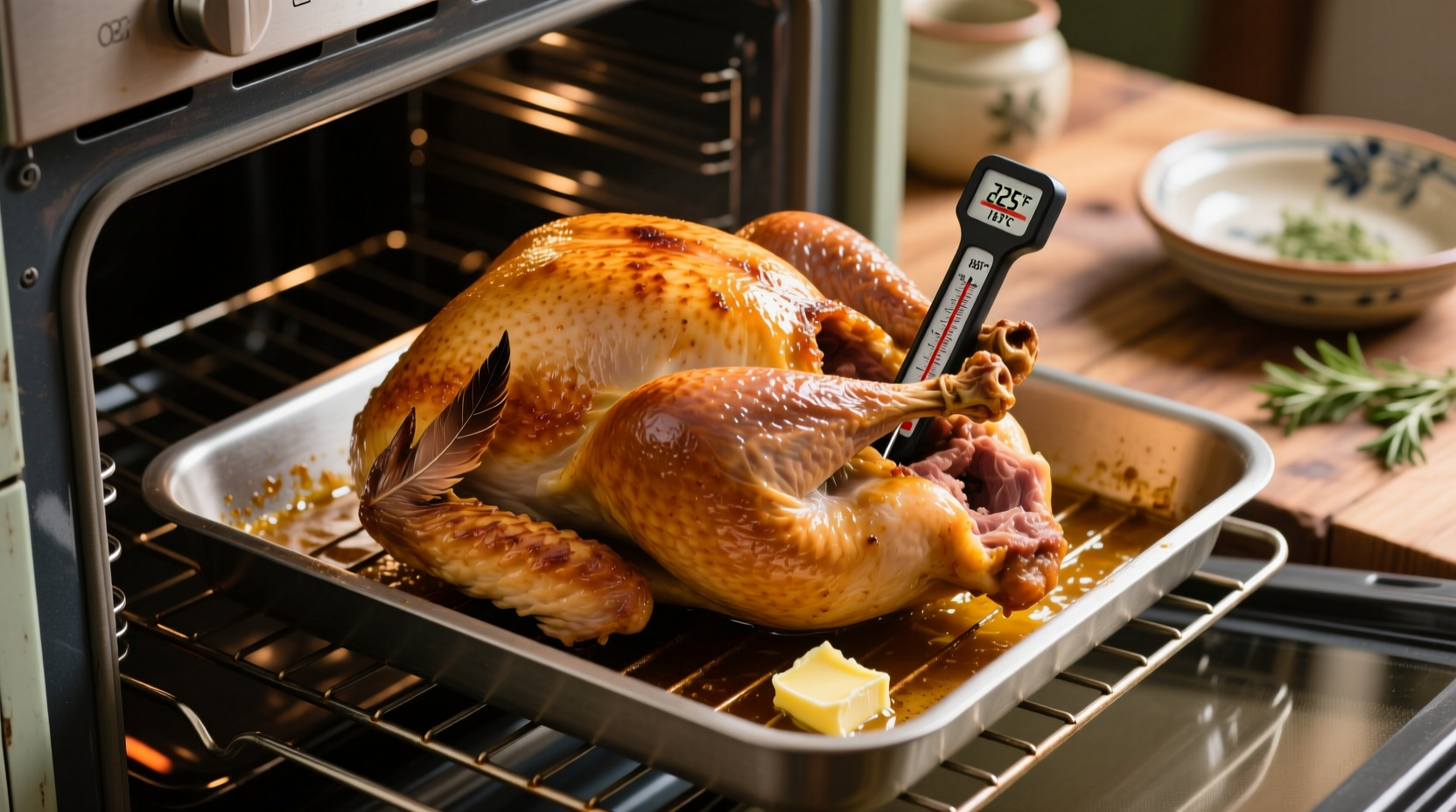Nothing ruins holiday celebrations faster than foodborne illness or a dry, overcooked turkey. Getting the temperature right isn't just about flavor—it's a critical food safety requirement that ensures your feast remains memorable for all the right reasons. In this guide, you'll learn precisely what temperature to cook turkey at, how to verify it's done safely, and professional techniques that guarantee juicy results every time.
Why Temperature Matters More Than Cooking Time
Many home cooks rely on cooking time charts, but oven temperatures vary significantly, and turkey size alone doesn't determine doneness. The only reliable method is checking internal temperature. According to the USDA Food Safety and Inspection Service, turkey must reach 165°F (73.9°C) to eliminate dangerous pathogens like salmonella and campylobacter that cause food poisoning.
"Visual cues like clear juices or skin color are unreliable indicators," explains Antonio Rodriguez, culinary expert with professional kitchen experience. "I've seen turkeys that appeared done at 150°F—still dangerously undercooked—and others that looked raw at 165°F but were perfectly safe. A thermometer removes all guesswork."
USDA-Approved Temperature Guidelines
The USDA has maintained the 165°F standard since 2006, based on extensive food safety research. This temperature represents the point where harmful bacteria are eliminated within seconds. Previously, recommendations varied between 180°F–185°F, which often resulted in dry meat as collagen fully contracts at higher temperatures.
| Part of Turkey | Minimum Safe Temperature | Professional Recommendation |
|---|---|---|
| Breast | 165°F (73.9°C) | Remove at 160°F–162°F for carryover cooking |
| Thigh & Drumstick | 165°F (73.9°C) | Remove at 162°F–163°F |
| Stuffing (if used) | 165°F (73.9°C) | Cook separately for safety |
How Cooking Method Affects Temperature Management
While the target internal temperature remains constant, your cooking approach impacts how you manage the process:
Oven Roasting (Standard Method)
Cook at 325°F (163°C) for most even results. Start checking temperature 45–60 minutes before expected finish time. Place thermometer in the thickest part of breast and thigh, avoiding bone. Remember that breast meat cooks faster than dark meat—this is why many chefs recommend removing breasts early if cooking turkey parts separately.
Brining Considerations
Wet or dry brining affects heat transfer. Brined turkeys may reach target temperature 15–20 minutes faster due to increased thermal conductivity from salt penetration. Always verify with a thermometer regardless of brining method.

Proper Temperature Checking Technique
Where and how you check temperature matters as much as the reading itself:
- Position matters: Insert probe horizontally into the thickest part of breast meat, parallel to the bone but not touching it
- Avoid false readings: Keep probe away from fat pockets, which register higher temperatures
- Check multiple spots: Verify temperature in breast, thigh, and wing areas
- Wait for stabilization: Leave thermometer in place for 15–20 seconds for accurate reading
The FDA Food Code specifies that temperature verification must occur in the geometric center of the thickest muscle group. For whole turkeys, this means checking both breast and thigh areas separately, as they cook at different rates.
The Critical Resting Period
Never carve immediately after reaching 165°F. The USDA recommends resting turkey for 20–30 minutes, covered loosely with foil. During this time:
- Internal temperature continues rising 5°–10°F (carryover cooking)
- Juices redistribute throughout the meat
- Proteins relax, preventing dryness when carving
This resting period explains why professional chefs often remove turkeys from heat at 160°F–162°F—the temperature will safely reach 165°F during resting while preserving moisture.
Troubleshooting Common Temperature Issues
Problem: Breast reaches 165°F while thighs remain under 160°F
Solution: Cover breast with foil and continue cooking, or elevate turkey so breast faces away from direct heat
Problem: Turkey appears done but thermometer reads under 160°F
Solution: Continue cooking—this happens when ovens run hotter than indicated or with convection settings
Problem: Temperature stalls around 150°F for extended period
Solution: This is normal evaporative cooling; maintain consistent oven temperature and continue monitoring
Special Considerations for Alternative Cooking Methods
Sous Vide: Can safely cook at lower temperatures (145°F–150°F) for extended periods (6+ hours) due to precise temperature control, but requires finishing with high-heat sear.
Deep Frying: Requires maintaining oil at 350°F (177°C) and checking internal temperature at multiple points due to rapid cooking.
Smoking: Low-and-slow methods (225°F–250°F) still require reaching 165°F internal temperature—the lower heat simply extends cooking time.
Remember that any cooking method must ultimately achieve the USDA's minimum internal temperature standard for safety, regardless of technique.











 浙公网安备
33010002000092号
浙公网安备
33010002000092号 浙B2-20120091-4
浙B2-20120091-4